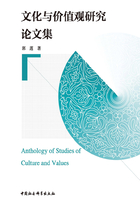
Introduction
There exist four fundamental institutions in all human societies.They are the family,the school,the job and the community.Each of the four has its pair of unequal but complementary basic roles.Teacher and student are an archetypal role pair in schools(Hofstede,1986).
According to Bandura(1963,p.90),“role behavior usually refers to the occurrence of complex adult responses that are guided by social norms or similar forms of symbolic models”.Gudykunst et al.(1984,p.67)indicate,“a role is a set of behavioral expectations associated with a particular position in a group”.Dodd has more concrete explanations:
Cultural attitudes also revolve around categories of people and their expected pattern of performance or activity.These predetermined patterns,or at least prescribed and expected behaviors about categories people occupy,are called roles(Dodd,1995,p.42).
To illustrate,the behaviors people expect teachers(or students,lawyers,fathers,clerks)to perform are considered their roles.Since there are various role areas,such as age roles,occupational roles,friendship roles,and gender roles,according to Dodd,each culture possesses different expectations on the people in this culture depending on their different roles.And also what are the appropriate performances that the people expect a certain role in a certain social position to operate may vary across cultures.For example,it is surely not considered to be a proper way to address teachers by their first names at Chinese schools whereas it is a quite acceptable behavior in most schools in countries like Sweden and U.S..Role patterns,as a matter of fact,are the products of a society's culture.Hence culture has an important saying in role relationships,including teacher-student relationships.
In addition,the basic principle of human social organization is that of communication involving participation in the other as Mead argues:
This participation is made possible through the type of communication which the human animal is able to carry out—a type of communication distinguished from that which takes place among other forms which have not this principle in their societies(Mead,1934,p.253).
Therefore,when people from different cultural backgrounds encounter and communicate with each other,the ways of communication differ greatly because people's behaviors are,more or less,influenced by the culture they live in with its specific language,rules and norms.Hall(1959),in his well-known book The Silent Language,maintains that“culture is communication”and“communication is culture”.Therefore when teachers and students from different cultures encounter and communicate with each other in schools perplexities and even problems may arise due to the differences in their respective cultural expectations of teacher-student role relationships,their recognition of proper behaviors for certain roles in their own cultures and their different ways of communication.
This research attempts to probe the similarities and differences in the teacher and student relationships between China and Sweden from an intercultural perspective.